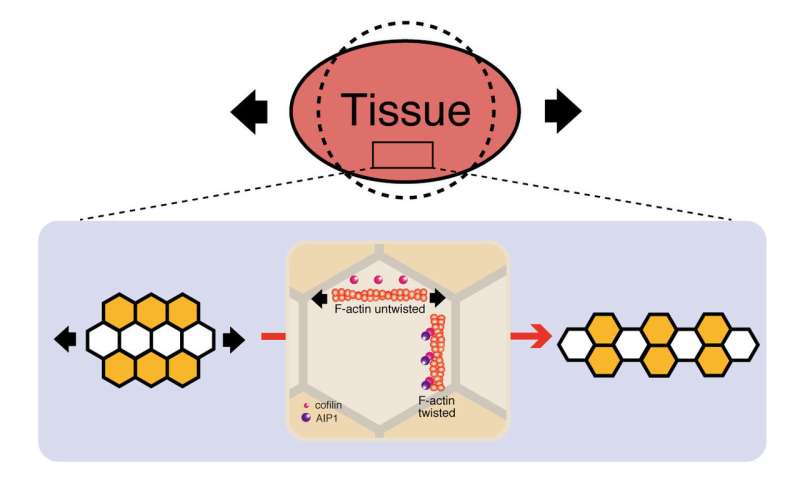Mechano-sensing and resistance during development of the fruitfly wing

Research about mechanical control of tissue development is published in Nature Communications this week. The article identifies the protein that regulates cell rearrangement in response to increasing tissue tension. This protein, AIP1, and its cofactor cofilin, could be involved in tissue tension-driven cell rearrangement across species, and the activity could apply to cell proliferation and death.
During development, cells change their positions along the tissue axis to shape tissue. The global patterns of forces in tissue, including tension and compression, influence growth. Although knowledge of the molecular mechanisms of force generation inside a cell has grown in recent years, much less is known about how a cell responds to and resists tissue tension when cell contact surfaces are being remodeled.
Kaoru Sugimura and Keisuke Ikawa of the Institute for Integrated Cell-Material Sciences (iCeMS) at Kyoto University in Japan used Drosophila pupal wings in their research. They screened actin binding proteins, and found that Actin binding protein 1 (AIP1) regulates cell arrangement in the wing, with strong signals where cell rearrangement is taking place. They found less AIP1 once the new cell contact surfaces are formed.
"We know that cells have the ability to sense the forces around them and tune their signaling pathways in response to these forces," Sugimura says. "Our data illustrate that AIP1 and cofilin are sensing tissue tension via structural changes of actin filament and that these actin binding proteins promote directional cell rearrangement by reinforcing the structural stability of remodelling cell contact surfaces."
The conversion of tissue tension into local actin turnover using AIP1 could be a strategy found in cell arrangement elsewhere in nature, as the protein is found in species from yeast to humans. The authors propose the mechanisms identified should be investigated in other tissue, as well as in other developmental contexts, such as cell proliferation and death.
More information: Keisuke Ikawa et al, AIP1 and cofilin ensure a resistance to tissue tension and promote directional cell rearrangement, Nature Communications (2018). DOI: 10.1038/s41467-018-05605-7
Journal information: Nature Communications
Provided by Kyoto University




















